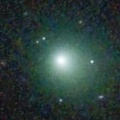
|
It brightened rapidly. Now it is very bright as 10.9 mag (May 17, Chris Wyatt). It stays observable at 11 mag in good condition for a long time from spring to summer.
Date(TT) R.A. (2000) Decl. Delta r Elong. m1 Best Time(A, h)
May 22 13 36.79 26 49.7 1.422 2.140 122 11.1 21:36 ( 0, 82)
May 29 13 36.10 24 18.7 1.435 2.118 118 11.0 21:08 ( 0, 79)
|
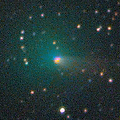
|
Now it is bright as 12.0 mag (May 18, Michael Jager). It stays bright as 11-12 mag until August. In the Southern Hemisphere, it stays observable in excellent condition for a long time. In the Northern Hemisphere, it stays observable in good condition for a while. But it becomes extremely low after July.
Date(TT) R.A. (2000) Decl. Delta r Elong. m1 Best Time(A, h)
May 22 20 52.21 -5 12.3 0.478 1.236 106 11.9 3:11 (324, 43)
May 29 21 20.23 -9 27.4 0.458 1.234 107 11.7 3:05 (325, 39)
|
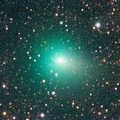
|
It brightened up to 8.9 mag in April (Apr. 12, Carlos Labordena). Now it is fading. But it is still bright as 12.4 mag (May 17, Chris Wyatt). It stays observable in excellent condition for a while. It will be fading after this, and it will fade down to 13 mag at the end of May.
Date(TT) R.A. (2000) Decl. Delta r Elong. m1 Best Time(A, h)
May 22 11 22.06 24 43.3 1.148 1.656 99 12.1 20:42 ( 65, 69)
May 29 11 8.58 22 36.4 1.383 1.737 91 12.8 20:49 ( 75, 59)
|
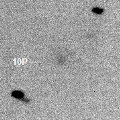
|
Now it is 11.2 mag (Apr. 19, Chris Wyatt). In the Southern Hemisphere, it is observable in the morning sky. In the Northern Hemisphere, it will appear in the morning sky in June.
Date(TT) R.A. (2000) Decl. Delta r Elong. m1 Best Time(A, h)
May 22 1 22.02 0 55.4 2.135 1.540 42 12.2 3:11 (267, -2)
May 29 1 40.51 2 13.9 2.133 1.570 43 12.4 3:05 (267, -1)
|
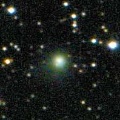
|
Now it is 12.8 mag (May 7, Thomas Lehmann). It will brighten up to 10 mag in winter in 2022. In the Northern Hemisphere, it stays observable in good condition for a long time, although it becomes extremely low temporarily from May to June. In the Southern Hemisphere, it is not observable until November.
Date(TT) R.A. (2000) Decl. Delta r Elong. m1 Best Time(A, h)
May 22 3 57.30 50 26.4 4.970 4.126 30 12.6 20:42 (151, 6)
May 29 4 11.01 50 18.4 4.954 4.095 28 12.5 3:05 (209, 6)
|
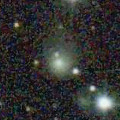
|
Now it is 13.5 mag (May 8, Sandor Szabo). It is expected to be observable at 5-6 mag for a long time from 2022 to 2023. In the Northern Hemisphere, it is not observable at the high light from 2022 summer to 2023 summer. In the Southern Hemisphere, it stays extremely low for a while. But it will be observable in good condition at the high light.
Date(TT) R.A. (2000) Decl. Delta r Elong. m1 Best Time(A, h)
May 22 18 8.67 43 16.5 5.906 6.314 109 12.9 2:11 (180, 82)
May 29 18 3.21 43 29.3 5.821 6.256 110 12.8 1:38 (180, 82)
|
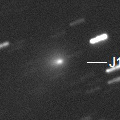
|
Now it is bright as 12.6 mag (May 19, Chris Wyatt). It stays 13 mag until early summer. In the Southern Hemisphere, it stays observable in good condition for a long time. It is getting higher slowly also in the Northern Hemisphere.
Date(TT) R.A. (2000) Decl. Delta r Elong. m1 Best Time(A, h)
May 22 15 10.15 -27 21.9 2.374 3.370 167 13.0 23:08 ( 0, 28)
May 29 14 52.76 -24 41.3 2.411 3.377 159 13.0 22:23 ( 0, 30)
|
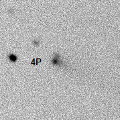
|
Now it is 14.5 mag (May 9, Ken-ichi Kadota). It will brighten up to 10 mag from summer to autumn, and it will be observable in excellent condition. Appearing in the morning sky.
Date(TT) R.A. (2000) Decl. Delta r Elong. m1 Best Time(A, h)
May 22 0 19.83 5 51.7 2.371 1.956 54 13.5 3:11 (272, 13)
May 29 0 35.96 7 19.9 2.284 1.920 56 13.2 3:05 (272, 16)
|
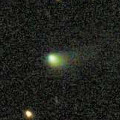
|
Now it is 13.9 mag (May 13, Taras Prystavski). It stays 13-14 mag from 2020 to 2021. It will be observable in good condition after this in the Southern Hemisphere. It locates somewhat low in the Northern Hemisphere.
Date(TT) R.A. (2000) Decl. Delta r Elong. m1 Best Time(A, h)
May 22 19 30.20 -27 58.1 2.141 2.904 130 13.6 3:11 (355, 27)
May 29 19 29.63 -28 45.9 2.082 2.910 137 13.6 3:04 ( 0, 26)
|
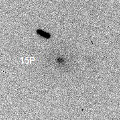
|
Now it is very bright as 13.3 mag (May 10, Alan Hale). It will brighten very rapidly, and it will brighten up to 10 mag from July to August. It stays observable in the morning sky for a long time.
Date(TT) R.A. (2000) Decl. Delta r Elong. m1 Best Time(A, h)
May 22 23 43.67 -9 7.1 1.182 1.241 68 14.4 3:11 (290, 12)
May 29 0 14.23 -5 26.7 1.138 1.186 66 13.7 3:05 (286, 12)
|
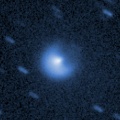
|
Now it is not observable. It will appear in the morning sky in July.
Date(TT) R.A. (2000) Decl. Delta r Elong. m1 Best Time(A, h)
May 22 3 37.82 27 20.7 6.882 5.882 8 14.0 3:11 (226,-10)
May 29 3 43.99 27 39.4 6.876 5.883 10 14.0 3:05 (228, -8)
|
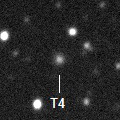
|
Now it is 13.5 mag (May 17, Chris Wyatt). It is expected to brighten up to 11.5 mag in 2022. It is observable in excellent condition in the Southern Hemisphere. In the Northern Hemisphere, it is not observable until November.
Date(TT) R.A. (2000) Decl. Delta r Elong. m1 Best Time(A, h)
May 22 8 24.58 -26 27.7 5.345 5.271 80 14.1 20:42 ( 54, 3)
May 29 8 30.12 -25 41.8 5.386 5.239 76 14.1 20:49 ( 59, -1)
|
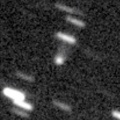
|
Now it is 14.5 mag (May 17, Chris Wyatt). It was expected to brighten up to 13 mag from spring to summer. But actually, it is fainter than originally expected. It stays 14-15 mag until early autumn. In the Southern Hemisphere, it stays observable in good condition for a long time. In the Northern Hemisphere, it is not observable until July in 2022.
Date(TT) R.A. (2000) Decl. Delta r Elong. m1 Best Time(A, h)
May 22 21 23.52 -78 31.5 3.112 3.607 111 14.5 3:11 (353,-25)
May 29 21 46.39 -79 54.9 3.086 3.603 112 14.5 3:05 (354,-26)
|

|
It brightened up to 11.6 mag in winter (Feb. 18, Thomas Lehmann). Now it is fading. It has already faded down to 14.3 mag (Apr. 30, Chris Wyatt). In the Southern Hemisphere, it stays observable in good condition after this. In the Northern Hemisphere, it will never be observable after this.
Date(TT) R.A. (2000) Decl. Delta r Elong. m1 Best Time(A, h)
May 22 4 43.39 -54 4.5 2.816 2.737 75 14.6 20:42 ( 46,-45)
May 29 4 50.33 -53 18.7 2.884 2.800 75 14.7 20:49 ( 47,-49)
|
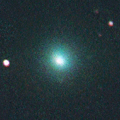
|
It brightened up to 10.5 mag in early March (Mar. 8, Bob King). Now it is fading. But it is still bright as 13.6 mag (Apr. 21, Ken-ichi Kadota). In the Northern Hemisphere, it stays observable in the evening low sky until early June while the comet will be fading. It is not observable in the Southern Hemisphere.
Date(TT) R.A. (2000) Decl. Delta r Elong. m1 Best Time(A, h)
May 22 6 12.84 31 14.8 2.422 1.664 32 14.6 20:42 (120, 12)
May 29 6 35.04 29 59.4 2.545 1.752 30 15.0 20:49 (120, 9)
|
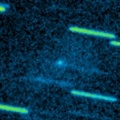
|
Now it is 17.5 mag (Apr. 20, J.-F. Soulier). Brightening very rapidly. It will brighten up to 8.5 mag from September to October. But the condition is bad in this apparition. In the Northern Hemisphere, it is observable only in the extremely low sky until July. In the Southern Hemisphere, it will be observable after late August. But it stays locating low for a while.
Date(TT) R.A. (2000) Decl. Delta r Elong. m1 Best Time(A, h)
May 22 2 48.98 45 26.9 2.553 1.733 28 15.0 3:11 (220, 10)
May 29 3 15.84 45 12.6 2.495 1.661 27 14.6 3:05 (220, 9)
|
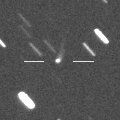
|
It will brighten up to 14.5 mag from spring to summer. In the Southern Hemisphere, it stays observable in excellent condition for a long time. In the Northern Hemisphere, it is not observable after this.
Date(TT) R.A. (2000) Decl. Delta r Elong. m1 Best Time(A, h)
May 22 2 6.36 -62 47.8 2.539 2.665 85 14.7 3:11 (326,-37)
May 29 2 45.38 -65 5.5 2.498 2.674 88 14.7 3:05 (329,-39)
|

|
Now it is 15.1 mag (May 19, Chris Wyatt). It will stay at 14-15 mag for a long time from 2021 to 2022. It stays observable in good condition after this while brightening gradually.
Date(TT) R.A. (2000) Decl. Delta r Elong. m1 Best Time(A, h)
May 22 17 49.63 -0 43.5 4.283 5.152 145 14.8 1:52 ( 0, 54)
May 29 17 42.30 -1 21.6 4.221 5.139 152 14.7 1:18 ( 0, 54)
|
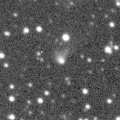
|
Now it is 15.1 mag (May 19, Chris Wyatt). It stays 14-15 mag until the end of 2021. In the Southern Hemisphere, it stays observable in good condition for a long time. In the Northern Hemisphere, it is not observable until June.
Date(TT) R.A. (2000) Decl. Delta r Elong. m1 Best Time(A, h)
May 22 23 35.13 -35 52.8 4.356 4.353 83 14.9 3:11 (312, -4)
May 29 23 38.38 -35 28.1 4.272 4.360 88 14.8 3:05 (314, -1)
|
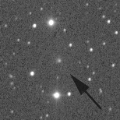
|
Now it is 14.5 mag (Apr. 29, Thomas Lehmann). It stays 15 mag until summer. In the Southern Hemisphere, it stays observable in good condition until June. In the Northern Hemisphere, it is observable in the low sky from March to May.
Date(TT) R.A. (2000) Decl. Delta r Elong. m1 Best Time(A, h)
May 22 7 44.34 -5 4.0 2.354 2.076 61 15.0 20:42 ( 77, 10)
May 29 7 56.94 -2 4.6 2.412 2.051 57 15.0 20:49 ( 83, 7)
|

|
Now it is 15.0 mag (May 17, Chris Wyatt). It will brighten up to 13 mag in 2022. In 2021, it is observable at 14-15 mag in good condition.
Date(TT) R.A. (2000) Decl. Delta r Elong. m1 Best Time(A, h)
May 22 13 1.36 -0 0.2 2.828 3.595 132 15.3 21:00 ( 0, 55)
May 29 12 59.64 -0 10.2 2.889 3.580 126 15.3 20:49 ( 8, 54)
|
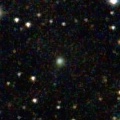
|
Now it is 15.6 mag (May 8, Sandor Szabo). In the Northern Hemisphere, it stays observable at 15-16 mag for a long time from spring to early 2022. In the Southern Hemisphere, it is not observable until the end of 2021.
Date(TT) R.A. (2000) Decl. Delta r Elong. m1 Best Time(A, h)
May 22 16 17.20 80 31.6 3.163 3.133 79 15.4 0:22 (180, 45)
May 29 14 52.38 79 33.7 3.161 3.114 78 15.4 22:16 (180, 46)
|

|
It has not been observed yet in this apparition. The condition of this apparition is bad. It brightens up to 15.5 mag in spring, however, it is not observable until autumn when it becomes fainter than 19 mag.
Date(TT) R.A. (2000) Decl. Delta r Elong. m1 Best Time(A, h)
May 22 3 43.72 21 41.7 2.229 1.219 2 15.5 3:11 (229,-15)
May 29 4 11.61 23 18.2 2.228 1.218 3 15.5 3:05 (227,-15)
|

|
Now it is 15.4 mag (Apr. 19, Toshihiko Ikemura, Hirohisa Sato). In the Northern Hemisphere, it stays observable for a long time while it is getting fainter slowly. In the Southern Hemisphere, it will never be observable again.
Date(TT) R.A. (2000) Decl. Delta r Elong. m1 Best Time(A, h)
May 22 14 4.69 66 54.4 5.829 5.923 90 15.6 22:02 (180, 58)
May 29 13 55.07 65 49.7 5.917 5.971 88 15.7 21:25 (180, 59)
|
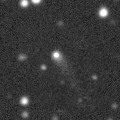
|
Now it is 16.0 mag (May 7, Sandor Szabo). It stays observable at 16 mag from 2021 to 2022. Toshihiko Ikemura and Hirohisa Sato reported it was very bright as 14.2 mag on Apr. 19.
Date(TT) R.A. (2000) Decl. Delta r Elong. m1 Best Time(A, h)
May 22 13 46.70 -7 41.4 3.941 4.818 146 15.7 21:46 ( 0, 47)
May 29 13 43.62 -6 17.8 3.999 4.806 138 15.7 21:15 ( 0, 49)
|

|
It had been observed as 8-9 mag for a long time in 2020. Now it is fading. It has already faded down to 16.4 mag (Mar. 27, Thomas Lehmann). It will be observable in good condition after this in the Southern Hemisphere. It locates extremely low after this in the Northern Hemisphere.
Date(TT) R.A. (2000) Decl. Delta r Elong. m1 Best Time(A, h)
May 22 17 10.71 -45 13.9 3.794 4.702 150 15.8 1:14 ( 0, 10)
May 29 17 2.56 -45 45.9 3.831 4.765 154 15.9 0:38 ( 0, 9)
|

|
Now it is 15.9 mag (Apr. 29, ATLAS-HKO, Haleakala). Toshihiko Ikemura and Hirohisa Sato reported it was bright as 14.7 mag on Apr. 18. It is expected to brighten up to 13 mag in 2022. In the Southern Hemisphere, it stays observable in good condition for a long time. In the Northern Hemisphere, it stays observable until June, but it will not be observable at the high light.
Date(TT) R.A. (2000) Decl. Delta r Elong. m1 Best Time(A, h)
May 22 12 27.98 -20 35.6 4.063 4.797 131 15.9 20:42 ( 4, 34)
May 29 12 21.63 -20 29.8 4.110 4.752 124 15.8 20:49 ( 16, 33)
|
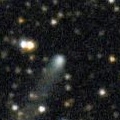
|
Now it is 15.7 mag (May 8, Sandor Szabo). It stays 15-16 mag until July. In the Northern Hemisphere, it stays observable in good condition for a long time. It is not observable after this in the Southern Hemisphere.
Date(TT) R.A. (2000) Decl. Delta r Elong. m1 Best Time(A, h)
May 22 18 43.28 53 15.4 4.999 5.236 97 15.9 2:45 (180, 72)
May 29 18 32.58 54 36.5 5.011 5.264 98 15.9 2:07 (180, 70)
|
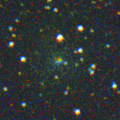
|
Now it is 15.1 mag (May 24, Mike Olason). Appearing in the morning sky. In the Northern Hemisphere, it stays observable in good condition while the comet will be fading. In the Southern Hemipsphere, it stays locating extremely low after this.
Date(TT) R.A. (2000) Decl. Delta r Elong. m1 Best Time(A, h)
May 22 1 57.29 24 23.6 3.045 2.196 27 15.9 3:11 (243, 5)
May 29 2 11.84 26 5.7 3.029 2.214 30 16.0 3:05 (243, 7)
|
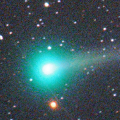
|
It brightened up to 3 mag in December in the SOHO spacecraft images (Dec. 18, Hirohisa Sato). Now it is 15 mag (May 20, Mike Olason). It stays observable in good condition after this while the comet will be fading.
Date(TT) R.A. (2000) Decl. Delta r Elong. m1 Best Time(A, h)
May 22 0 7.36 15 36.7 3.371 2.895 54 16.3 3:11 (265, 21)
May 29 0 11.75 16 24.1 3.375 2.987 59 16.4 3:05 (267, 25)
|
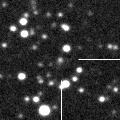
|
Now it is 16.3 mag (Apr. 19, Toshihiko Ikemura, Hirohisa Sato). It stays at 16-17 mag from 2020 to 2021. In the Northern Hemisphere, it stays observable in good condition for a long time. It locates extremely low in the Southern Hemisphere.
Date(TT) R.A. (2000) Decl. Delta r Elong. m1 Best Time(A, h)
May 22 19 38.41 46 46.9 8.664 8.830 96 16.3 3:11 (203, 77)
May 29 19 34.96 47 40.4 8.626 8.832 98 16.3 3:05 (183, 77)
|
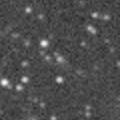
|
Now it is 16.6 mag (Apr. 21, Toshihiko Ikemura, Hirohisa Sato). It stays observable at 16.5-17 mag in good condition until October.
Date(TT) R.A. (2000) Decl. Delta r Elong. m1 Best Time(A, h)
May 22 17 14.82 -25 54.0 3.955 4.923 160 16.4 1:18 ( 0, 29)
May 29 17 9.41 -24 45.5 3.916 4.914 168 16.4 0:45 ( 0, 30)
|
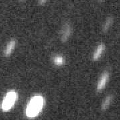
|
Now it is 16.2 mag (May 9, Toshihiko Ikemura, Hirohisa Sato). It is expected to brighten up to 11 mag in 2023. In the Northern Hemisphere, it stays observable in good condition for a long time. It locates extremely low in the Southern Hemisphere.
Date(TT) R.A. (2000) Decl. Delta r Elong. m1 Best Time(A, h)
May 22 17 56.23 50 3.4 6.417 6.745 104 16.5 1:58 (180, 75)
May 29 17 47.62 50 30.8 6.358 6.701 105 16.4 1:22 (180, 75)
|
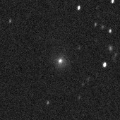
|
Now it is 16.4 mag (May 1, ATLAS-MLO, Mauna Loa). It is observable at 16.5 mag from spring in 2020 to summer in 2021.
Date(TT) R.A. (2000) Decl. Delta r Elong. m1 Best Time(A, h)
May 22 16 43.12 -16 54.7 3.899 4.894 168 16.4 0:46 ( 0, 38)
May 29 16 32.58 -17 24.5 3.901 4.912 175 16.4 0:08 ( 0, 38)
|
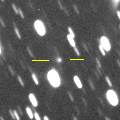
|
Now it is 16.5 mag (Apr. 20, Toshihiko Ikemura, Hirohisa Sato). It is observable at 16 mag from 2020 to 2021. In the Southern Hemisphere, it is not observable until summer.
Date(TT) R.A. (2000) Decl. Delta r Elong. m1 Best Time(A, h)
May 22 23 19.61 43 56.5 6.399 5.973 60 16.4 3:11 (239, 42)
May 29 23 19.50 44 13.6 6.331 5.978 65 16.4 3:05 (240, 46)
|
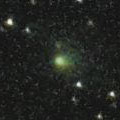
|
It brightened rapidly. Now it is bright as 15.8 mag (May 5, Katsumi Yoshimoto). It will be fading after this, and it will be fainter than 18 mag in July.
Date(TT) R.A. (2000) Decl. Delta r Elong. m1 Best Time(A, h)
May 22 12 27.03 3 10.3 1.691 2.408 123 16.5 20:42 ( 8, 58)
May 29 12 11.25 0 57.1 1.819 2.423 114 16.7 20:49 ( 28, 52)
|
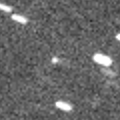
|
Now it is 17.2 mag (May 24, Mike Olason). It will brighten up to 9 mag, and will be observable in good condition in winter.
Date(TT) R.A. (2000) Decl. Delta r Elong. m1 Best Time(A, h)
May 22 23 16.45 -8 41.0 2.248 2.201 74 16.9 3:11 (294, 17)
May 29 23 28.74 -7 28.8 2.119 2.146 77 16.6 3:05 (295, 20)
|
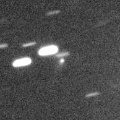
|
Now it is 17.4 mag (May 17, Michael Jager). It will approach to Earth down to 0.2 a.u. in December, and it is expected to brighten up to 4 mag. In the Northern Hemisphere, it stays observable in good condition for a long time until December while the comet is brightening gradually. In the Southern Hemisphere, it is not observable until mid December. Actually, it is somewhat fainter than this ephemeris recently.
Date(TT) R.A. (2000) Decl. Delta r Elong. m1 Best Time(A, h)
May 22 10 52.92 58 51.2 3.608 3.572 79 16.8 20:42 (151, 60)
May 29 10 44.37 57 41.4 3.619 3.490 74 16.7 20:49 (143, 56)
|
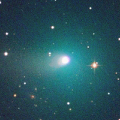
|
Brightened rapidly, and it brightened up to 9.7 mag in November (Nov. 15, Chris Wyatt). Now it is fading. It has already faded down to 15.9 mag (Apr. 30, Catalina Sky Survey). In the Northern Hemisphere, it stays observable in good condition for a long time. In the Southern Hemisphere, it locates extremely low after this.
Date(TT) R.A. (2000) Decl. Delta r Elong. m1 Best Time(A, h)
May 22 7 50.38 35 30.0 2.801 2.343 53 16.8 20:42 (113, 32)
May 29 8 5.55 34 31.4 2.913 2.393 50 17.0 20:49 (114, 28)
|
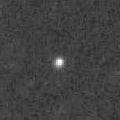
|
Now it is 16.7 mag (May 5, Taras Prystavski). It is expected to brighten up to 10 mag in 2023. In the Northern Hemisphere, it stays observable in good condition until 2023 autumn. In the Southern Hemipshere, it stays extremely low until mid July, then it becomes unobservable for a while. But it becomes observable in good condition after 2023 summer.
Date(TT) R.A. (2000) Decl. Delta r Elong. m1 Best Time(A, h)
May 22 12 11.78 38 59.0 6.975 7.237 101 16.8 20:42 (124, 83)
May 29 12 8.55 38 51.8 7.021 7.184 95 16.8 20:49 (110, 76)
|

|
Now it is 19.3 mag (Apr. 12, J. L. Virlichie, P. Traverse). It will brighten up to 15 mag from summer to autumn, and it will be observable in good condition.
Date(TT) R.A. (2000) Decl. Delta r Elong. m1 Best Time(A, h)
May 22 22 23.66 -6 47.4 2.282 2.425 85 17.0 3:11 (302, 28)
May 29 22 32.85 -6 16.0 2.186 2.410 90 16.8 3:05 (305, 31)
|
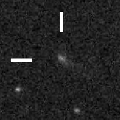
|
Now it is 17.8 mag (May 19, Filipp Romanov). It will brighten up to 15 mag from summer to autumn. In the Southern Hemisphere, it stays observable for a long time. In the Northern Hemisphere, it is not observable until late June. But it will be observable in good condition after that.
Date(TT) R.A. (2000) Decl. Delta r Elong. m1 Best Time(A, h)
May 22 1 19.06 -5 19.0 2.336 1.788 46 17.2 3:11 (273, -5)
May 29 1 36.12 -3 11.5 2.266 1.753 47 16.9 3:05 (272, -3)
|

|
Now it is 16.7 mag (Apr. 11, Toshihiko Ikemura, Hirohisa Sato). It will be fading slowly.
Date(TT) R.A. (2000) Decl. Delta r Elong. m1 Best Time(A, h)
May 22 17 57.57 -14 25.8 6.734 7.629 150 17.0 2:00 ( 0, 41)
May 29 17 52.17 -14 3.8 6.707 7.653 157 17.0 1:27 ( 0, 41)
|
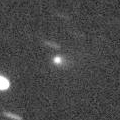
|
First return of a new periodic comet which brightened up to 16 mag in 2014. Now it is 16.9 mag (May 5, Taras Prystavski). It stays observable at 16-17 mag in good condition until July.
Date(TT) R.A. (2000) Decl. Delta r Elong. m1 Best Time(A, h)
May 22 12 9.07 5 50.0 1.512 2.187 118 17.0 20:42 ( 17, 60)
May 29 12 10.92 4 19.7 1.569 2.177 113 17.0 20:49 ( 30, 55)
|
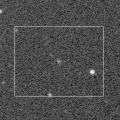
|
It will brighten up to 12.5 mag in 2022 summer. In the Southern Hemisphere, it stays observable in excellent condition for a long time. In the Northern Hemisphere, it is not observable until August in 2022.
Date(TT) R.A. (2000) Decl. Delta r Elong. m1 Best Time(A, h)
May 22 3 18.25 -42 21.7 5.762 5.383 63 17.1 3:11 (297,-45)
May 29 3 22.78 -42 46.5 5.668 5.334 65 17.0 3:05 (299,-42)
|
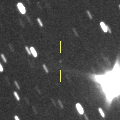
|
Now it is 18.5 mag (May 9, Toshihiko Ikemura, Hirohisa Sato). It will brighten very rapidly, and it will be observable at 10 mag in good condition from October to December. In the Northern Hemisphere, it locates somewhat low at the high light.
Date(TT) R.A. (2000) Decl. Delta r Elong. m1 Best Time(A, h)
May 22 16 44.40 16 36.0 0.979 1.877 141 17.3 0:47 ( 0, 72)
May 29 16 39.28 17 25.0 0.928 1.830 140 17.2 0:14 ( 0, 72)
|

|
Now it is 18.4 mag (May 9, Toshihiko Ikemura, Hirohisa Sato). It will brighten up to 15.5 mag from summer to autumn. It stays observable for a long time.
Date(TT) R.A. (2000) Decl. Delta r Elong. m1 Best Time(A, h)
May 22 15 25.66 -14 39.1 1.160 2.166 171 17.4 23:24 ( 0, 40)
May 29 15 19.81 -14 7.7 1.141 2.131 163 17.2 22:51 ( 0, 41)
|
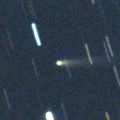
|
First return of a new periodic comet which brightened up to 14-15 mag in 2006. It brightened up to 14.5 mag in March (Mar. 16, F. Kugel, J.-G. Bosch). Now it is fading. It has already faded down to 17.1 mag (May 7, Thomas Lehmann). It will be fainter than 18 mag in June.
Date(TT) R.A. (2000) Decl. Delta r Elong. m1 Best Time(A, h)
May 22 13 20.70 18 59.3 1.380 2.133 125 17.4 21:20 ( 0, 74)
May 29 13 24.01 17 46.6 1.470 2.174 121 17.7 20:56 ( 0, 73)
|
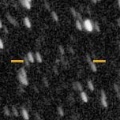
|
Now it is 17.5 mag (Apr. 24, Ken-ichi Kadota). It will brighten up to 15.5 mag in winter. In the Northern Hemisphere, it stays observable in good condition for a long time. It is not observable at all in the Southern Hemisphere.
Date(TT) R.A. (2000) Decl. Delta r Elong. m1 Best Time(A, h)
May 22 21 11.40 54 3.5 3.926 3.877 79 17.6 3:11 (219, 61)
May 29 21 9.25 56 45.2 3.849 3.835 81 17.5 3:05 (210, 63)
|
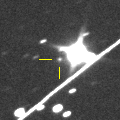
|
Now it is 17.0 mag (Apr. 30, ATLAS-HKO, Haleakala). It stays observable at 17-18 mag for a long time until 2024.
Date(TT) R.A. (2000) Decl. Delta r Elong. m1 Best Time(A, h)
May 22 14 50.89 -7 54.9 8.188 9.146 160 17.5 22:50 ( 0, 47)
May 29 14 46.53 -7 31.3 8.223 9.136 152 17.5 22:18 ( 0, 47)
|

|
First return of a new periodic comet observed at 17 mag in 2014. It has not been observed yet in this apparition. It is expected to brighten up to 17 mag from summer to autumn, and it will be observable in good condition.
Date(TT) R.A. (2000) Decl. Delta r Elong. m1 Best Time(A, h)
May 22 23 32.10 0 6.6 1.808 1.697 67 17.6 3:11 (284, 20)
May 29 23 48.26 2 29.2 1.754 1.687 69 17.5 3:05 (283, 22)
|
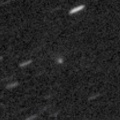
|
Now it is 17.4 mag (Apr. 19, ATLAS-HKO, Haleakala). It will be observable at 11 mag from winter to spring in 2022. In 2021, it is observable until July or August when it brightens up to 16-17 mag.
Date(TT) R.A. (2000) Decl. Delta r Elong. m1 Best Time(A, h)
May 22 10 23.52 14 18.4 2.812 3.015 91 17.6 20:42 ( 65, 52)
May 29 10 27.01 13 53.8 2.872 2.976 85 17.5 20:49 ( 72, 46)
|
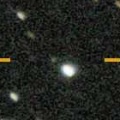
|
Now it is 17.2 mag (Apr. 28, ATLAS-HKO, Haleakala). It is expected to brighten up to 12 mag in 2023. In the Northern Hemisphere, it is observable in good condition in 2021. But it is observable only until November in 2022. In the Southern Hemisphere, it locates extremely low in 2021. But it will be observable in good condition at the high light.
Date(TT) R.A. (2000) Decl. Delta r Elong. m1 Best Time(A, h)
May 22 18 34.58 46 15.7 6.703 7.021 104 17.6 2:37 (180, 79)
May 29 18 29.82 46 27.6 6.622 6.973 106 17.5 2:04 (180, 79)
|
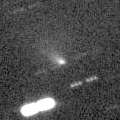
|
Now it is 17.0 mag (Apr. 14, Thomas Lehmann). It will be fading after this. In the Northern Hemisphere, it will be too low to observe in May. In the Southern Hemisphere, it stays observable in good condition after this.
Date(TT) R.A. (2000) Decl. Delta r Elong. m1 Best Time(A, h)
May 22 7 57.44 -3 0.9 1.857 1.678 63 17.5 20:42 ( 76, 14)
May 29 8 17.20 -4 44.4 1.947 1.740 63 17.7 20:49 ( 77, 10)
|

|
Now it is 17.0 mag (Apr. 22, ATLAS-HKO, Haleakala). It brightened rapidly. It stays 17-18 mag for a long time from 2021 to 2022. In the Southern Hemisphere, it stays observable in good condition for a long time. In the Northern Hemisphere, it is observable only until May.
Date(TT) R.A. (2000) Decl. Delta r Elong. m1 Best Time(A, h)
May 22 8 16.47 -8 1.0 5.748 5.489 70 17.6 20:42 ( 69, 14)
May 29 8 17.64 -8 18.4 5.831 5.477 64 17.6 20:49 ( 74, 7)
|
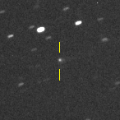
|
Now it is 17.4 mag (May 2, ATLAS-MLO, Mauna Loa). It will brighten up to 16 mag in 2022. In 2021, it stays observable at 18 mag until September.
Date(TT) R.A. (2000) Decl. Delta r Elong. m1 Best Time(A, h)
May 22 13 22.05 3 48.6 2.543 3.341 135 17.6 21:21 ( 0, 59)
May 29 13 20.23 3 32.2 2.598 3.327 128 17.7 20:52 ( 0, 58)
|
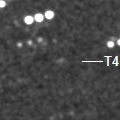
|
In the Northern Hemisphere, it is observable at 17-18 mag from spring to autumn. It is not observable in the Southern Hemisphere.
Date(TT) R.A. (2000) Decl. Delta r Elong. m1 Best Time(A, h)
May 22 2 49.32 61 22.4 2.889 2.251 42 17.8 3:11 (207, 20)
May 29 3 6.11 64 20.5 2.839 2.234 44 17.8 3:05 (205, 22)
|
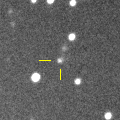
|
Now it is 17.5 mag (Apr. 18, Toshihiko Ikemura, Hirohisa Sato). Fading slowly. In 2021, it stays observable at 17-18 mag in good condition until early summer.
Date(TT) R.A. (2000) Decl. Delta r Elong. m1 Best Time(A, h)
May 22 12 55.08 -13 37.2 6.281 7.051 136 17.8 20:54 ( 0, 41)
May 29 12 54.69 -13 7.8 6.376 7.068 129 17.8 20:49 ( 7, 41)
|
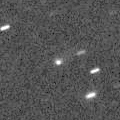
|
Now it is 17.1 mag (Apr. 18, Toshihiko Ikemura, Hirohisa Sato). It stays 17-18 mag for a long time from 2021 to 2023.
Date(TT) R.A. (2000) Decl. Delta r Elong. m1 Best Time(A, h)
May 22 10 39.44 11 34.7 4.648 4.862 96 17.8 20:42 ( 57, 53)
May 29 10 41.55 11 15.4 4.747 4.856 90 17.8 20:49 ( 66, 47)
|
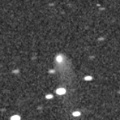
|
It brightened up to 13.8 mag in autumn in 2019 (Sept. 3, 2019, Chris Wyatt). Now it is fading slowly. It stays 18 mag until autumn.
Date(TT) R.A. (2000) Decl. Delta r Elong. m1 Best Time(A, h)
May 22 0 42.11 16 1.3 8.447 7.775 45 17.8 3:11 (260, 14)
May 29 0 44.21 16 37.2 8.406 7.818 51 17.8 3:05 (262, 19)
|

|
Peculiar asteroid moving along a cometary orbit. The condition is bad in this apparition. It brightened up to 17 mag in winter, but it was not observable. Appearing in the morning sky. But it will be fainter than 18 mag soon.
Date(TT) R.A. (2000) Decl. Delta r Elong. m1 Best Time(A, h)
May 22 1 13.12 7 50.0 2.400 1.766 41 17.8 3:11 (263, 4)
May 29 1 28.29 8 52.8 2.406 1.817 43 17.9 3:05 (263, 6)
|
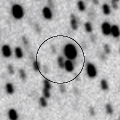
|
Now it is 18.6 mag (May 5, F. B. Zoltowski). It is expected to brighten up to 11 mag from spring to summer in 2022. In the Southen Hemisphere, it locates somewhat low in 2021, but it will be observable in good condition at the high light for a long time. In the Northern Hemisphere, it is observable in good condition in 2021, but it will not be observable at the high light.
Date(TT) R.A. (2000) Decl. Delta r Elong. m1 Best Time(A, h)
May 22 20 57.66 36 23.0 4.604 4.694 88 18.0 3:11 (258, 68)
May 29 20 54.49 36 56.4 4.460 4.632 93 17.9 3:05 (257, 73)
|
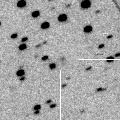
|
Now it is 18.2 mag (Apr. 19, Toshihiko Ikemura, Hirohisa Sato). In the Northern Hemisphere, it stays observable at 18 mag for a long time from 2021 to 2022. It is not observable in the Southern Hemisphere.
Date(TT) R.A. (2000) Decl. Delta r Elong. m1 Best Time(A, h)
May 22 17 31.79 55 5.2 6.806 7.082 101 17.9 1:34 (180, 70)
May 29 17 21.84 55 40.7 6.807 7.083 101 17.9 0:57 (180, 69)
|
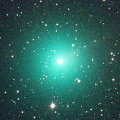
|
It brightened up to 7.3 mag in November (Nov. 7, Marco Goiato). Now it is fading. It has already faded down to 17.3 mag (Apr. 23, Thomas Lehmann). In the Northern Hemisphere, it stays observable in excellent condition for a long time. In the Southern Hemisphere, it stays locating extremely low after this.
Date(TT) R.A. (2000) Decl. Delta r Elong. m1 Best Time(A, h)
May 22 8 33.36 38 59.6 3.367 3.024 61 17.9 20:42 (114, 41)
May 29 8 44.48 38 8.3 3.513 3.095 57 18.2 20:49 (115, 37)
|

|
It has not been observed yet in this apparition. It will brighten up to 15-16 mag in autumn and it will be observable in good condition.
Date(TT) R.A. (2000) Decl. Delta r Elong. m1 Best Time(A, h)
May 22 22 40.10 -13 41.1 2.138 2.276 84 18.1 3:11 (304, 20)
May 29 22 49.69 -12 27.6 2.048 2.261 88 17.9 3:05 (306, 23)
|
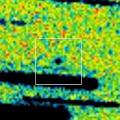
|
It was expected to brighten up to 13 mag from spring to summer. But actually, it is extremely faint as 19.0 mag (Mar. 22, A. C. Gilmore, P. M. Kilmartin). In the Southern Hemisphere, it stays observable in good condition for a long time. In the Northern Hemisphere, it is not observable until late August.
Date(TT) R.A. (2000) Decl. Delta r Elong. m1 Best Time(A, h)
May 22 1 57.15 -45 11.8 1.552 1.549 70 18.6 3:11 (306,-32)
May 29 2 36.99 -43 35.6 1.565 1.539 69 18.7 3:05 (303,-34)
|
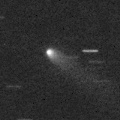
|
Now it is 18.6 mag (Apr. 4, Michael Jager). Although it is around the aphelion, it is much brighter than originally predicted.
Date(TT) R.A. (2000) Decl. Delta r Elong. m1 Best Time(A, h)
May 22 10 42.90 10 11.6 5.198 5.424 97 18.6 20:42 ( 55, 53)
May 29 10 43.96 9 56.0 5.311 5.426 91 18.7 20:49 ( 64, 47)
|
|
![]()
 C/2018 N2 ( ASASSN )
C/2018 N2 ( ASASSN ) C/2020 H6 ( ATLAS )
C/2020 H6 ( ATLAS ) C/2017 T2 ( PanSTARRS )
C/2017 T2 ( PanSTARRS ) C/2020 Y2 ( ATLAS )
C/2020 Y2 ( ATLAS ) C/2019 K7 ( Smith )
C/2019 K7 ( Smith ) 17P/Holmes
17P/Holmes C/2020 S3 ( Erasmus )
C/2020 S3 ( Erasmus ) C/2019 O3 ( Palomar )
C/2019 O3 ( Palomar ) C/2020 O2 ( Amaral )
C/2020 O2 ( Amaral ) C/2019 U5 ( PanSTARRS )
C/2019 U5 ( PanSTARRS ) C/2017 Y2 ( PanSTARRS )
C/2017 Y2 ( PanSTARRS ) C/2019 T3 ( ATLAS )
C/2019 T3 ( ATLAS ) C/2020 S8 ( Lemmon )
C/2020 S8 ( Lemmon ) 67P/Churyumov-Gerasimenko
67P/Churyumov-Gerasimenko C/2021 A1 ( Leonard )
C/2021 A1 ( Leonard ) 156P/Russell-LINEAR
156P/Russell-LINEAR C/2020 V2 ( ZTF )
C/2020 V2 ( ZTF ) 284P/McNaught
284P/McNaught 106P/Schuster
106P/Schuster C/2017 U7 ( PanSTARRS )
C/2017 U7 ( PanSTARRS ) 413P/2020 W4 ( Larson )
413P/2020 W4 ( Larson ) C/2020 R7 ( ATLAS )
C/2020 R7 ( ATLAS ) 6P/d'Arrest
6P/d'Arrest 57P/du Toit-Neujmin-Delporte
57P/du Toit-Neujmin-Delporte 409P/2020 V1 ( LONEOS-Hill )
409P/2020 V1 ( LONEOS-Hill ) C/2021 D2 ( ZTF )
C/2021 D2 ( ZTF ) C/2020 F2 ( ATLAS )
C/2020 F2 ( ATLAS ) P/2014 W12 ( Gibbs )
P/2014 W12 ( Gibbs ) 22P/Kopff
22P/Kopff C/2020 K1 ( PanSTARRS )
C/2020 K1 ( PanSTARRS ) C/2020 N1 ( PanSTARRS )
C/2020 N1 ( PanSTARRS ) C/2020 F7 ( Lemmon )
C/2020 F7 ( Lemmon ) 152P/Helin-Lawrence
152P/Helin-Lawrence C/2020 T4 ( PanSTARRS )
C/2020 T4 ( PanSTARRS ) C/2019 C1 ( ATLAS )
C/2019 C1 ( ATLAS ) 99P/Kowal 1
99P/Kowal 1 C/2017 B3 ( LINEAR )
C/2017 B3 ( LINEAR ) (301964) 2000 EJ37
(301964) 2000 EJ37 C/2021 E3 ( ZTF )
C/2021 E3 ( ZTF ) C/2016 Q2 ( PanSTARRS )
C/2016 Q2 ( PanSTARRS ) C/2020 M3 ( ATLAS )
C/2020 M3 ( ATLAS ) 193P/LINEAR-NEAT
193P/LINEAR-NEAT C/2020 K5 ( PanSTARRS )
C/2020 K5 ( PanSTARRS ) 47P/Ashbrook-Jackson
47P/Ashbrook-Jackson![]()




























































